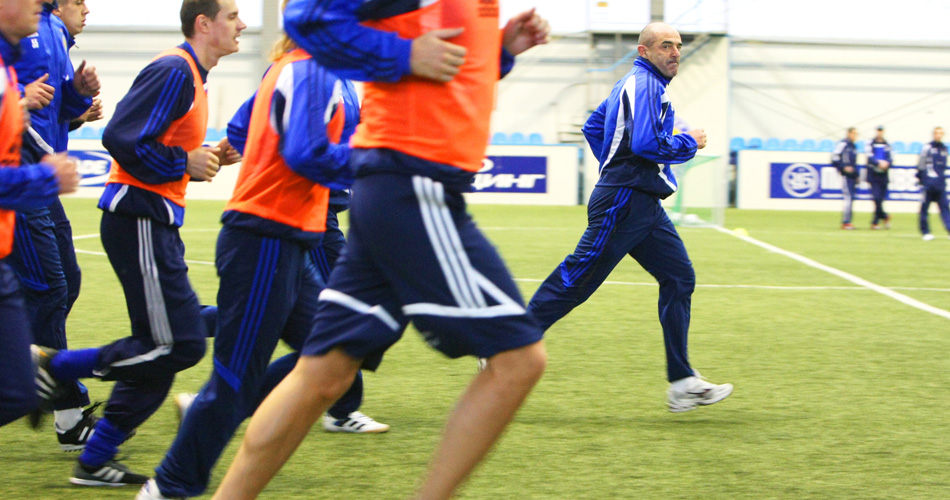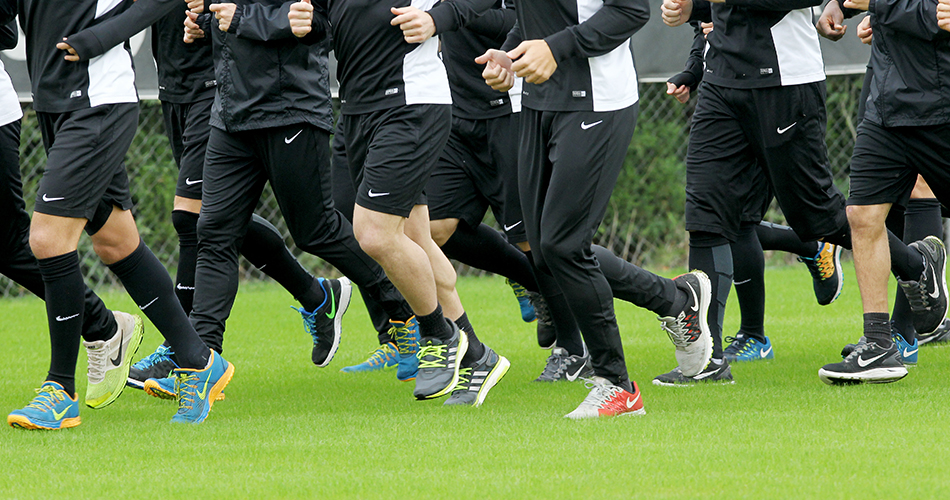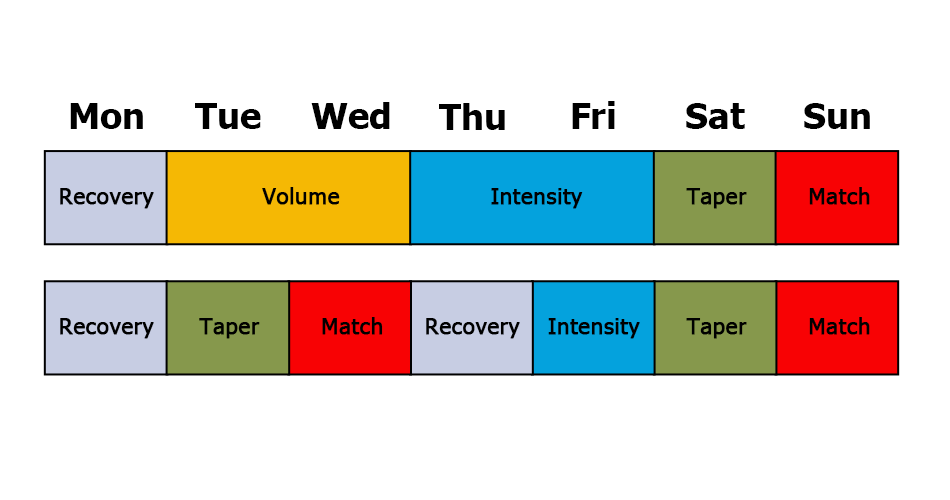Problems of the Periodization of Training in Mixed Sports (Part 4)
Previus parts:
Problems of the Periodization of Training in Mixed Sports – Part 1
Problems of the Periodization of Training in Mixed Sports – Part 2
Problems of the Periodization of Training in Mixed Sports – Part 3
Competition period
Before I start with the characteristics of the competition period, I need to mention one thing first. In the research papers (see Lyle’s series Methods of Endurance and a review of Tabata study) it was shown that higher intensity endurance training (VO2max intervals) brings up the effects pretty quickly, but they also soon reach ceiling in terms of training effects. If we look at the training of endurance runners (see the excellent review paper by Seiler), we can conclude that:
“Training characteristics of nationally or internationally competitive endurance athletes training 10 to 13 times per week seem to converge on a typical intensity distribution in which about 80% of training sessions are performed at low intensity (2 mM blood lactate), with about 20% dominated by periods of high-intensity work, such as interval training at approx. 90% VO2max. Endurance athletes appear to self-organize toward a high-volume training approach with careful application of high-intensity training incorporated throughout the training cycle. Training intensification studies performed on already well-trained athletes do not provide any convincing evidence that a greater emphasis on high-intensity interval training in this highly trained athlete population gives long-term performance gains. The predominance of low-intensity, long-duration training, in combination with fewer, highly intensive bouts may be complementary in terms of optimizing adaptive signaling and technical mastery at an acceptable level of stress.”
This excerpt is taken from abstract of Seiler S. (2010). What is best practice for training intensity and duration distribution in endurance athletes? Int J Sports Physiol Perform. 2010 Sep;5(3):276-91.
Yet, we see a lot of improvements utilizing higher intensity intervals with team sport athletes (see Helgerud et al.). I wonder what’s the cause of this. Well, (1) team athletes are not elite endurance level athletes (with 55-65 ml/kg/min VO2max) and (2) most of their training is lower intensity (speaking of technical training of soccer in this case, see Castagna et al.), thus those higher intensity intervals brings results (which brings me back to the concept of doing in conditioning what is not done in skill sessions in terms of energy system development).
Regarding platoue effect of higher intensity training (VO2max, glycolytic conditioning, RSA). Well, I guess we need more research to back this up (and thus avoid over-doing it when it is not bringing results – I am going to get back to this concept later), and in the mean time we don’t need to be too much concerned regarding this, since we are doing it for short period of time anyway (6-8 weeks in the preparatory period) in the full volume, and in the small volume during the competition period to maintain achieved adaptation with minimal time investment.
Ok, let’s get back out characteristics of competition period from previous parts:
– Because of the duration of the competition period, there is no need to be in top shape and to peak (except for very important games, play-offs and international competitions), besides it is not possible to do so due de-training (thus maintenance principle is not an option). Players should be injury free and playing at appropriate high level of play, without allowing de-training to happen.
One concept I like to use all the time is peaking index developed by Tudor Bompa.











Responses